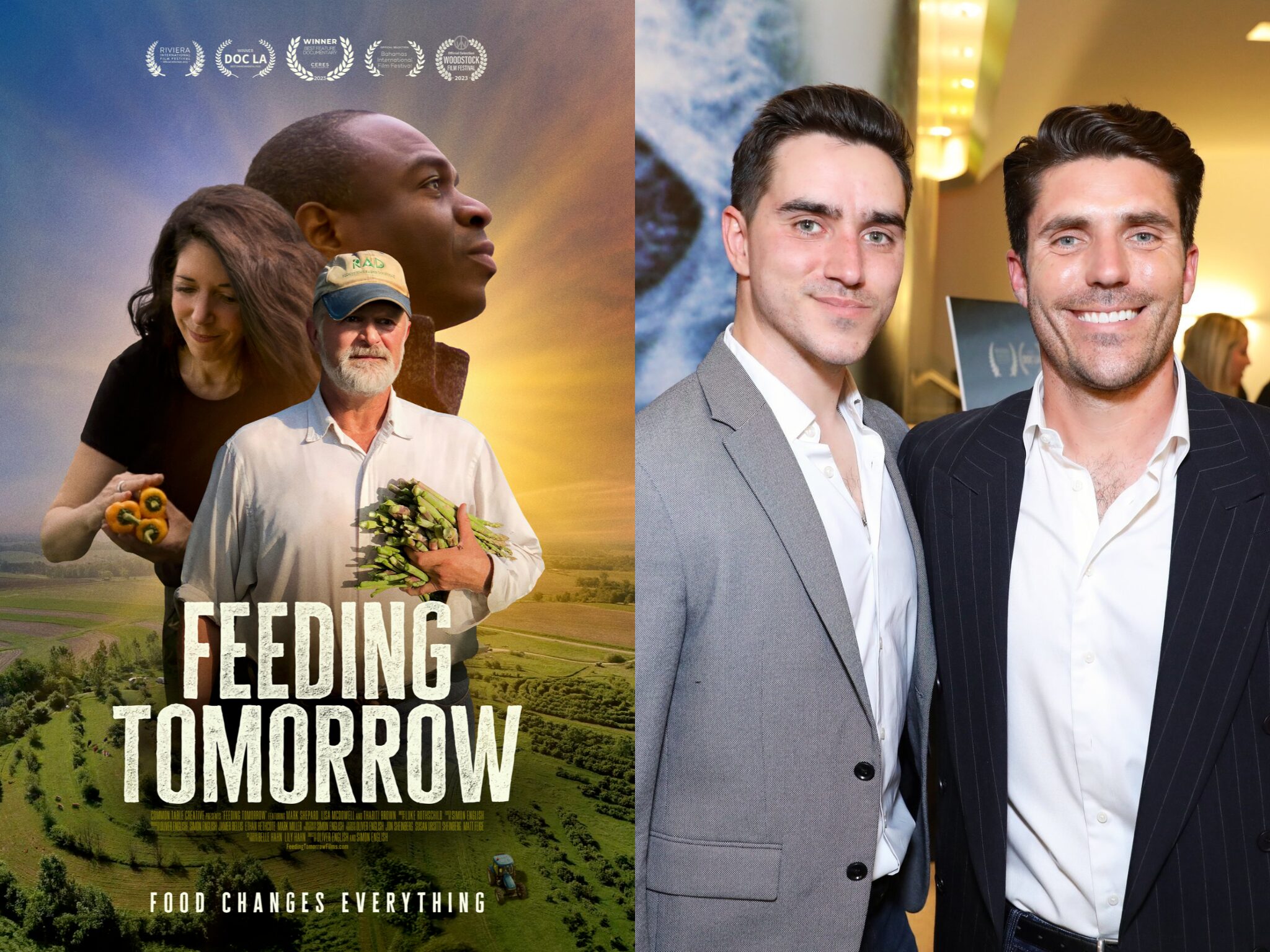Feeding Tomorrow: Award-Winning Documentary Champions Regenerative Agriculture, Soil Health, Plant-Forward Diets and Food Education for Better Future
11 Mins Read
A new documentary on food, climate change and agriculture, highlights the wretched state of the American food system, and how regenerative farming, plant-forward diets, healthier soil and increased education can ensure a safe, sustainable and secure food future.
“As a species, what are we doing with our time? How are we consuming this planet?”
It’s a question that forms a backdrop for the entire runtime of Feeding Tomorrow, a new documentary about food and climate change. Over 75 minutes, directors and brothers Oliver and Simon English take viewers through the American food landscape – both literally and figuratively – threading together stories from innovators in the education, health and agriculture sectors to show what the future of food looks like today, and what it could be shaped into instead.
We’re on our way to reaching a population of 10 billion, and the film argues that at current levels, scaling up production to meet those consumption needs is impossible. With agriculture accounting for half of all habitable land (77% of which is dedicated to livestock farming) and 70% of freshwater, there simply will be no space or water left.
But with agrifood a multi-trillion-dollar economy with a workforce of over one billion, there needs to be a solution. “Without addressing the food system, we will not be able to achieve any climate change goals,” says Shenggen Fan, director-general of the International Food Policy Research Institute (IFPRI).
A winner of the 2022 Best Environmental Documentary award at the Los Angeles Documentary Film Festival and of Best Feature Documentary at the Ceres Food Film Festival, Feeding Tomorrow is packed with statistics that come fast and hit hard and revolves mainly around the story of three changemakers across farming, health and education.
Clare Fox, executive director of the LA Food Policy Council, explains: “In the food movement, the critical thing is connecting the dots between all of these different issues – health, food access, the environment, the economy overall – [and] coming together with a common agenda and shared values about what we care for.”
Oliver and Simon English are the sons of renowned Boston-based celebrity chef and TV personality Todd English whose restaurant Olive spawned an F&B empire The Olive Group. The former is a filmmaker, chef, and food advocate and the latter is a cinematographer, editor and creative director. The two co-founded the impact-driven production & hospitality company Common Table Creative, which produced Feeding Tomorrow. In addition, the film was supported by the American Farmland Trust, Regenerate America and the National Resource Defense Council among others,
In a Q&A with Food Tank about the film, Oliver English shared that “the main message that we are trying to get through with this film is that food and our food systems are deeply connected to our personal health, to environmental health, and to the health of our society, and through our individual food choices, we all have a tremendously powerful role to play in the stewardship of our planet.”
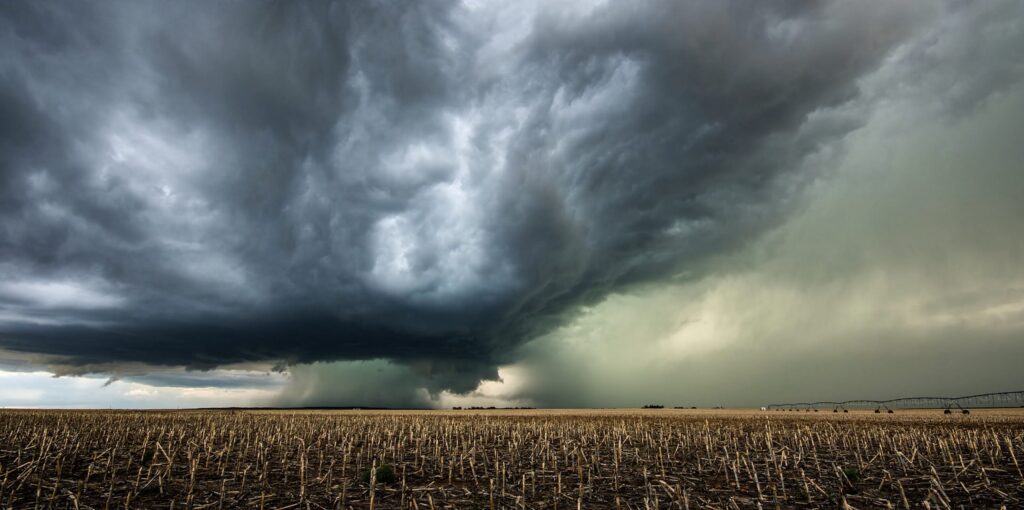
How the Second World War is connected to our food system today
The first of these innovators is Mark Shepard, founder and farmer at New Forest Farm in Wisconsin. He recalls a story from his time in Alaska, when a neighbour Steve kept felling trees down for years on end, clearing almost 80 acres of land. When Shepard asked Steve why he did so, the response was: “You gotta cut all the trees down if you want to farm the land.”
Reflecting on that, Shepard says in Feeding Tomorrow: “This is how civilised humanity interacts with the Earth: it gets to a place that’s rich and abundant in resources, and it takes them away. It removes all the trees and turns them into toilet paper and boards and whatnot – well then, what’s left?”
The documentary takes us back to the Dust Bowl, and how a failure to protect our soil led to crops dying out. This was followed by the Green Revolution when we realised there were gases in the oil and petroleum left over from the Second World War and turned them into fertilisers for crops. This coincided with the chemical industry pivoting from a class of chemicals for warfare into glyphosate – whose carcinogenic status varies, depending on who you ask – a known carcinogen, for the food industry.
The importance of soil and how it’s treated is a big talking point in the film, which connects soil health directly to human health. Plus, it shines a light on concentrated animal feeding operations (or CAFOs), explaining how some of them can produce more sewage than all of Los Angeles. Animals in these farms are usually given growth hormones too, and they’re subjected to 80% of all antibiotics used in the US.
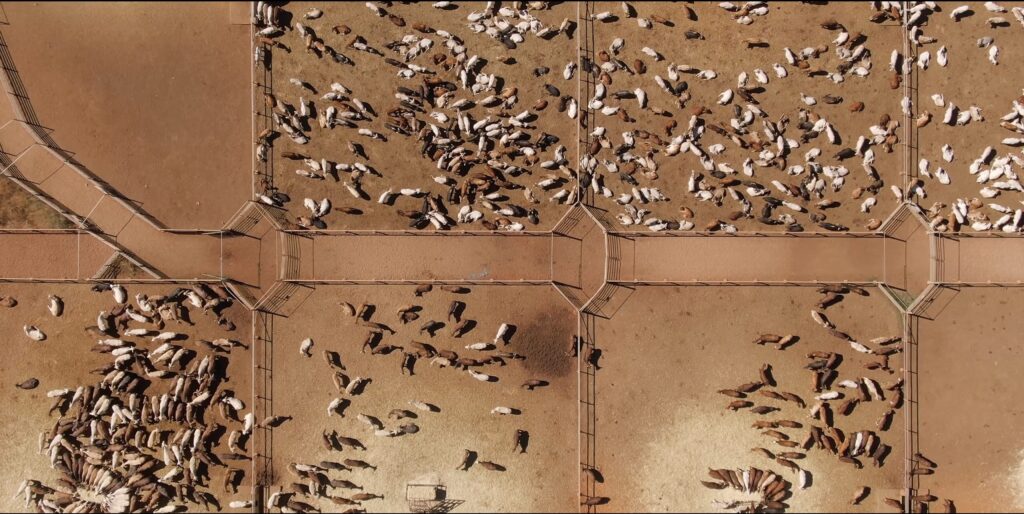
Research shows that 99% of all American livestock is factory-farmed, numbering 10 billion animals (nearly nine billion of these are chickens). Apart from the animal abuse aspect, this has massive implications for the environment too – animal agriculture is responsible for 11-19.5% of global emissions, and meat accounts for 60% of the food system’s total emissions. By far, the worst of these is beef, whose emissions are twice as high as the next food on the list.
A lot is made of soy and corn production as well – but 77% of all soy grown goes to animal feed, which was also the source for 35% of corn cultivation in the US in 2020 (a further 31% was used for biofuels). “It can take eight pounds of corn and soy to make one gallon of milk, and… 10 pounds of corn and soy blend to make one pound of beef,” says Shepard. “And so that’s really stupid. Because we could grow 90% less corn and beans if we didn’t feed it to animals.”
Rishi Kumar, founder of Sarvodaya Farm in California, adds: “If you look at a corn and soy field, and what does that food turn into? Basically processed food, junk food, and animal feed. It doesn’t go anywhere else.”
The importance of eating the rainbow
The documentary then moves to Lisa McDowell, director of clinical nutrition and wellness at St Joseph Mercy Hospitals. She has worked with US Olympics teas and the Detroit Red Wings ice hockey team, helping them gain the 1% edge through nutrition and healthcare that she claims is the difference between first place and 100th.
The grim nature of the US food supply is illustrated by a story about how McDowell went to Whole Foods to shop for her father – who had just recovered from cancer – because what was available at the hospital “wasn’t good enough”. It’s a shocking idea, a doctor not trusting her own hospital’s food for patient health (she punctuates this point by explaining how one of the main ingredients in the oral supplements available was high-fructose corn syrup).
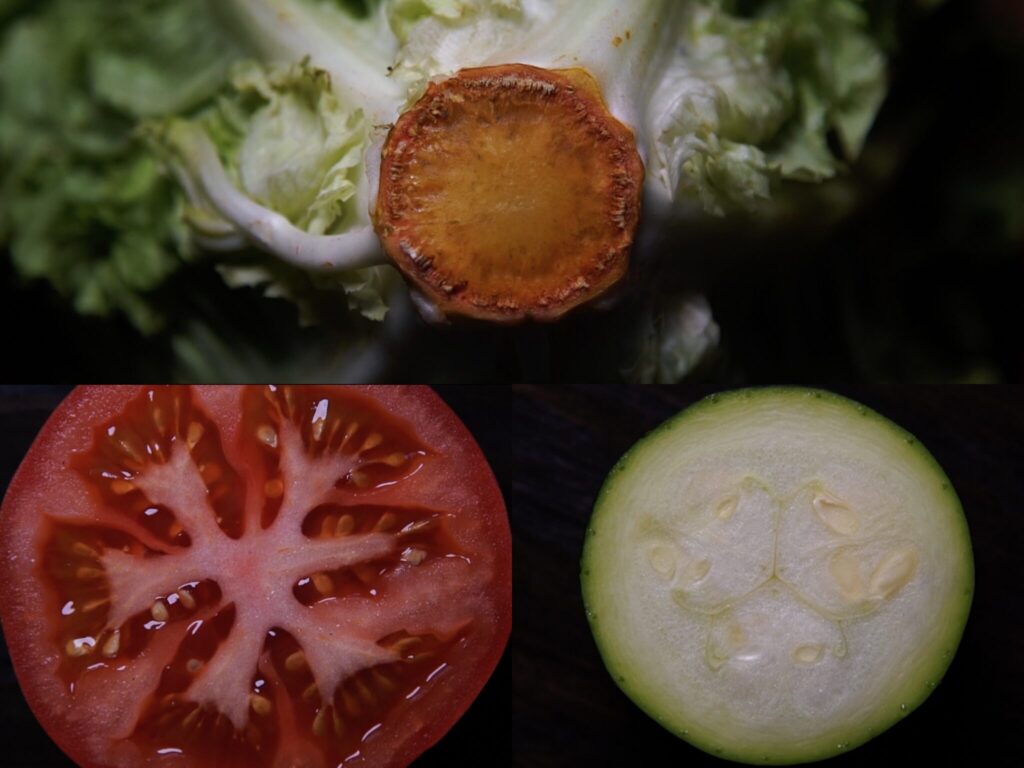
This highlights another problem: even an expert like McDowell was too focused on the biochemical aspect of food, and took a while to realise the fallacies of the system. Without a nutrition degree, how easy is it for an average American to create a grocery cart that is optimum for their health?
McDowell and her team came up with a list of foods that can impact gene expressions in the human body, finding that the same foods that fuel elite athletes are the ones that can impact outcomes for cancer. She espouses the concept of eating the rainbow – consuming foods of different colours (obtained from phytonutrients), the brighter and deeper being the better.
She spearheaded a project to return 25 of the hospital’s 365-acre area back to farmland, making it the first US hospital that had a farm connect the food that it grows directly to its patients. “We believe food is medicine and that it can prevent disease, or if you do have a disease, it can reverse it,” McDowell explains.
She further touches upon meat consumption and the average American’s eating habits. “They think they’re getting something beneficial and healthy, but they’re being misled. The standard American diet is incredibly processed: processed meats, food from a box. The most harmful foods, in my opinion, are processed meats.” Red and processed meats have been classed as carcinogens by the WHO, in the same vein as pollutants like tobacco smoke and plutonium. Studies have also found that eating 50g of processed meat daily increases the risk of colorectal cancer and coronary heart disease by 18% each.
Kids should get their hands dirty
The third main feature of the documentary revolves around Codman Academy, a charter public school in Dorchester, Massachusetts, and its head Thabiti Brown. He highlights how the American education system places an outsized emphasis on high scores, four-year college admission numbers, and attendance, alongside traditionally vaunted subjects like maths or science – but there’s little focus on wellness or mental health.
Brown links mental health to the food system, and how products like ultra-processed foods can cause harm. These foods – while not all bad – have been linked to depression, depression and cognitive decline. So it doesn’t help that UPFs make up 70% of what American children eat.
“Our students in most schools are eating high levels of processed food, high in sugar, high in fats, high in sodium, and because they’re inexpensive, and they’re easy to package and sell,” says Brown. “But we know that when we go to more well-resourced communities, that’s not always the case. In fact, it’s far less the case.”
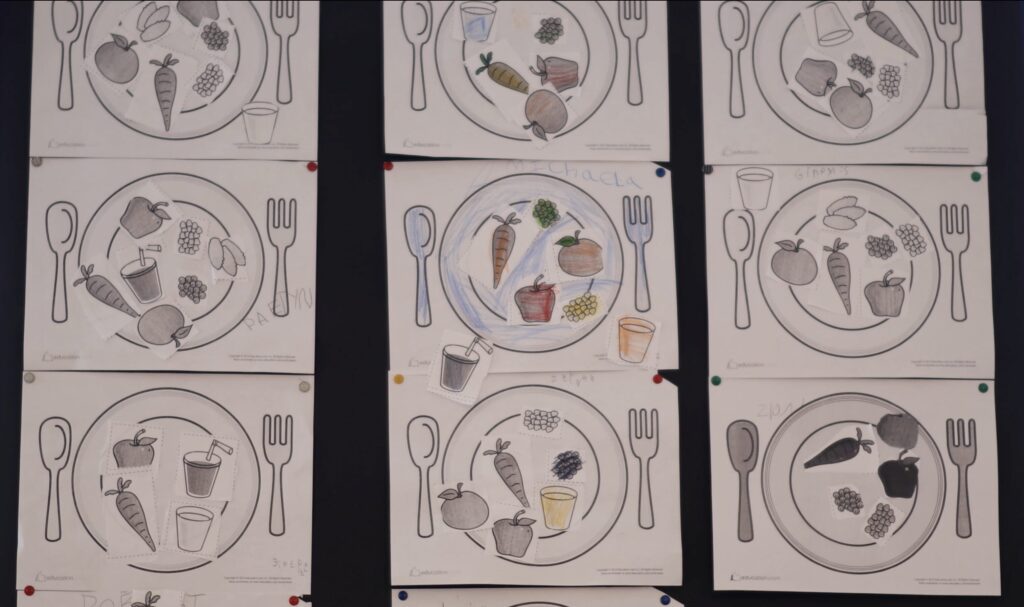
He goes on to explain how the local area has always had places with more packaged foods than fresh produce, a challenge mirrored in many urban neighbourhoods across the country, especially in Black and Brown areas. Processed foods are also associated with obesity, whose incidence is considerably higher in non-Hispanic Black Americans (50%), than non-Hispanic white adults (41%).
Brown explains the need for practical holistic education to show how food is connected to our well-being, where students can get their hands dirty and see seeds turn into fruition. The idea is that there’s no better environmental educational tool than a school garden, and the hope is that some of the students grow up to be urban farming entrepreneurs to help shape a more sustainable and beneficial food system.
Codman Academy puts its money where its mouth is, having invested in a chef to create healthy foods from scratch every day, which focus on high quality and flavour and are comprised of produce from local farms. It’s an expensive undertaking, especially for a charter school, but “it’s who we are”, notes Brown.
What’s for dinner? Start questioning your plate
Feeding Tomorrow ties all these stories into a call to transition towards regenerative agriculture, which it defines as “farming practices that promote biodiversity, topsoil growth, carbon sequestration, animal integration and resilience”. There’s an example of the animal part of that equation from Shepard’s farm, where cows and hogs – all rescued from CAFOs – leave mineral-rich urine and manure that naturally fertilises the soil.
“Drop the McDonald’s burger,” he suggests. “Drop the feedlot beef. Then, let’s use them in their natural function to maintain these strops of greenery through the entire agricultural landscape of the USA and around the world. And it’s a heck of a lot more sustainable and has a lower carbon footprint than a CAFO model would.”
The farmer explains how a third of all farmable land on Earth has been lost in the last 40 years alone. But what if, instead of making the land adapt to our needs, we humans listen and adapt to what the land has been doing forever? Terming this approach “restoration agriculture”, he recommends moving our staple foods from annual plants (as we currently do) to perennials. But can that be scalable and feed everyone, everywhere? Only if more and more of us take the plunge, Shepard says.
“There’s a whole downstream effect: the healthier the soil, healthier plants, healthier animals, healthier humans. That’s just the way it is, it works that way,” he adds.
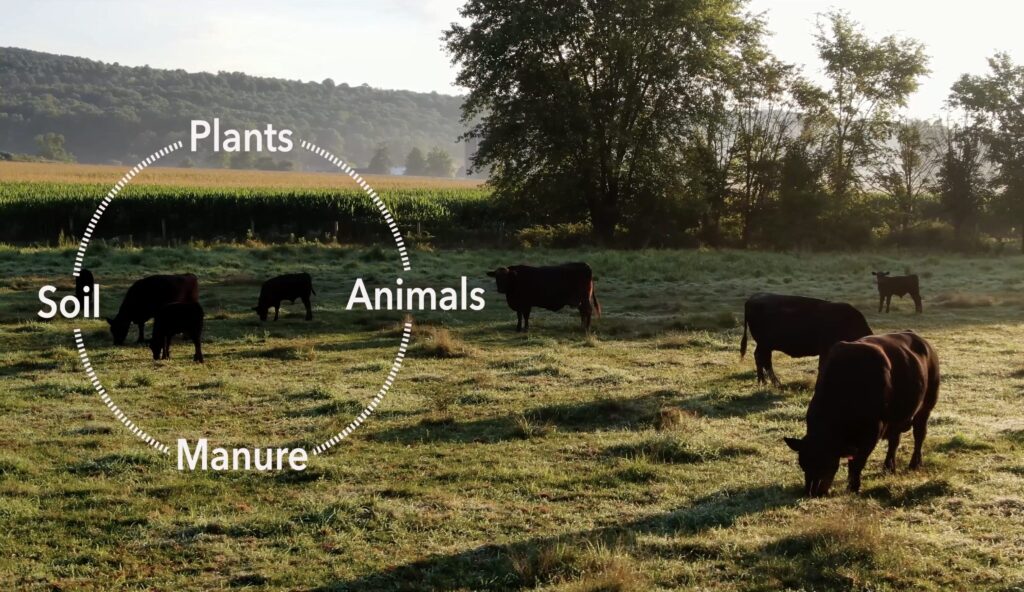
This is brought up at other points in the documentary too. There’s a direct connection between unhealthy soil and unhealthy people because, without the essential micronutrients in the former, you’re putting yourself at risk of developing chronic health problems. Last year, Americans spent over four trillion dollars on healthcare, but so much of that is avoidable. In 2019, when this figure was at $3.8B, one study revealed that between 20-25% of healthcare spending is wasteful. The film connects this to the US food system, which can drastically reduce this number.
Other themes explored in Feeding Tomorrow are the importance of smallholder farmers (who provide over a third of the global food supply); food waste, composting and upcycling; and policy intervention. “Until we start to shift the priorities of our economy towards a healthier population, we’re going to continue to have this issue of tremendous inequality in our food system,” notes Anastasia Cole Plakias, co-founder and COO of Brooklyn Grange Rooftop Farm.
It’s important to note that the film places heavy emphasis on shifting away from meat production and consumption and upping our intake of whole foods. “The diet of tomorrow is going to be primarily plant-based,” explained Fan from IFPRI. “There will be some beef – not zero. Make sure that every iota of the beef that they do eat produces manure that is actually applied to fields and is doing its magic.”
As English tells VegNews, “Visiting and learning from all of these farmers has shown me firsthand how truly powerful our food choices are…And it begins with where we are getting our food, the farms and farmers we are supporting, and what we decide to eat. It includes putting plants at the center of your plate, and eating lots of colors.”
It’s a fast-paced documentary that’s chock full of numbers, success stories, expert opinions and hard evidence. At times, when presented one after the other, the stats can be a little too much, though you can’t argue against their efficacy. It’s also highly quotable, notably on Shepard’s part, but it works.
“What are you going to eat for dinner tonight? Start asking the questions,” implores Shepard. “Where was it grown? How was it grown? … What impact on the planet did it have? How it was processed… How it was transported, where it was transported from and to. What impact does it have when I take it into my home and how do I prepare it? What happens with the leftovers? … Do they go to a landfill?”
He concludes: “We need to begin to investigate every aspect of our lives, and let’s start with what’s on the plate tonight for dinner.”
Feeding Tomorrow is out now and can be streamed on various platforms including Apple TV, Prime Video, Vudu, Google Play, and YouTube.


